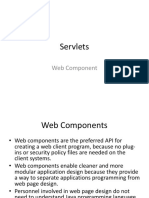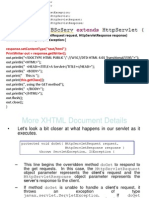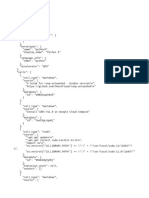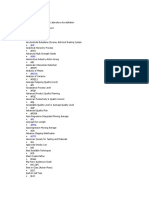0% found this document useful (0 votes)
26 views86 pagesModule 3
The document provides a comprehensive overview of Java Servlets, which are server-side programs that handle client requests and generate dynamic responses. It discusses the advantages of Servlets over traditional CGI, outlines their lifecycle methods (init, service, destroy), and explains the architecture and development process, including the use of Tomcat as a servlet container. Additionally, it includes practical steps for creating and deploying a simple servlet application.
Uploaded by
mvvishruth2Copyright
© © All Rights Reserved
We take content rights seriously. If you suspect this is your content, claim it here.
Available Formats
Download as PPTX, PDF, TXT or read online on Scribd
0% found this document useful (0 votes)
26 views86 pagesModule 3
The document provides a comprehensive overview of Java Servlets, which are server-side programs that handle client requests and generate dynamic responses. It discusses the advantages of Servlets over traditional CGI, outlines their lifecycle methods (init, service, destroy), and explains the architecture and development process, including the use of Tomcat as a servlet container. Additionally, it includes practical steps for creating and deploying a simple servlet application.
Uploaded by
mvvishruth2Copyright
© © All Rights Reserved
We take content rights seriously. If you suspect this is your content, claim it here.
Available Formats
Download as PPTX, PDF, TXT or read online on Scribd
/ 86



















































































